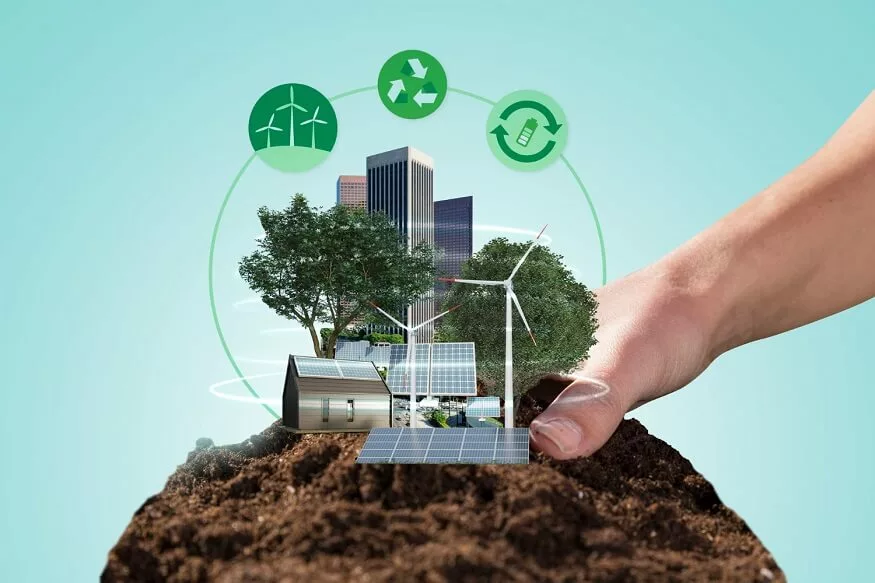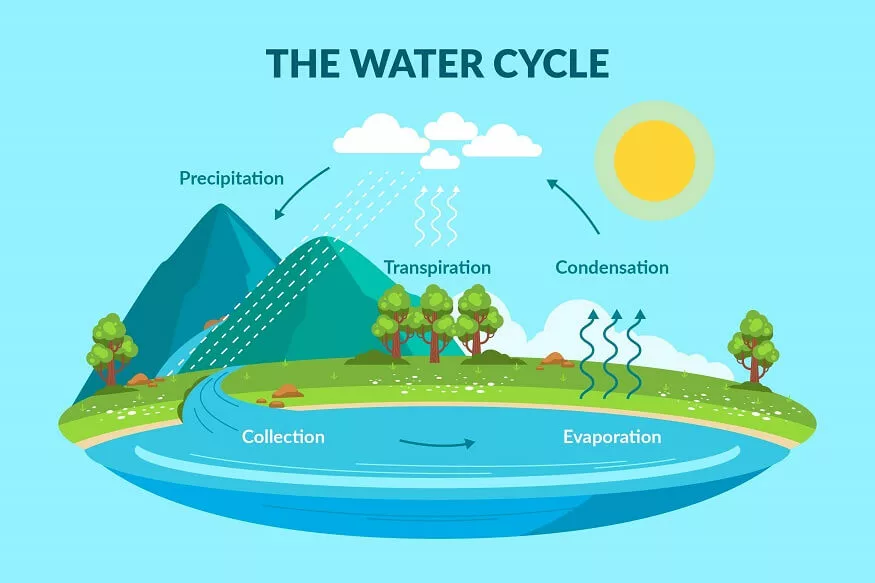From the air we breathe to the minerals beneath the earth’s surface, natural resources are as diverse as they are crucial. This article aims to delve into the different types of natural resources, providing tangible examples, and exploring their immense importance and significance in our daily lives.
What are Natural Resources?
Natural resources are materials or substances that are found in nature and can be used for economic gain or other benefits. These resources, essential for the sustenance and development of human life, range from water and air to minerals and forests. They are the foundation upon which societies build their economies and manage their lifestyles.
Types of Natural Resources
These resources can be broadly classified into several categories:
1. Renewable Resources
Renewable resources are those that can be replenished naturally at a pace equal to or faster than the rate at which they are consumed. These resources are sustainable and can be used indefinitely if managed properly.
Examples: Solar energy, wind energy, hydro energy (from water), geothermal energy, and biomass (like wood and biofuels).
2. Non-renewable Resources
Non-renewable resources are those that do not replenish at a significant rate compared to the speed at which they are consumed. They are finite and can be depleted.
Examples: Fossil fuels (such as coal, oil, and natural gas), minerals (like gold, diamonds, and iron), and certain underground water reservoirs.
3. Biotic Resources
Biotic resources are obtained from the biosphere (living and organic materials). These are usually renewable if used sustainably.
Examples: Forest products (like timber and rubber), animals for meat, leather, and dairy products, and crops.
4. Abiotic Resources
Abiotic resources comprise non-living things. They can be either renewable or nonrenewable.
Examples: Minerals (like gold, silver, and platinum), land, air, water (in rivers, lakes, and oceans), and soil.
5. Flow Resources
Flow resources are those that are neither renewable nor non-renewable but are constantly available. They are characterised by their movement and flow.
Examples: Wind and sunlight. While the source is constant, the availability of the resource can vary according to weather and time of day or year.
6. Potential Resources
Potential resources are those that exist in a region and may be used in the future. Their actual value isn’t released yet due to a lack of technology or feasibility.
Examples: Solar energy in a region with little current technology for harnessing it, or undiscovered mineral deposits.
7. Stock Resources
Stock resources are those that have been surveyed but are not used due to a lack of technology or because it is not profitable to exploit them currently.
Examples: Hydrogen in water which can be used for fuel but is currently not economically feasible to extract.
Importance of the Natural Resources
Natural resources are indispensable to human life and the functioning of our world. Their significance spans various aspects of society, the economy, and the environment. Here are key points highlighting the importance of natural resources:
Economic Importance
- Foundation of Economies:
- Source of Employment:
- Trade and Revenue:
- Biodiversity:
- Climate Regulation:
Natural resources form the backbone of economies worldwide. They are essential for the production of goods and services, influencing industrial, agricultural, and technological development.
Industries based on natural resources, such as agriculture, mining, and energy, employ millions of people, contributing to economic stability and growth.
Many countries rely on exporting natural resources as a significant source of national income. Commodities like oil, minerals, and timber are major players in international trade.
Environmental Significance
Natural resources like forests and oceans are habitats for countless species, maintaining biodiversity. This biodiversity is crucial for ecological balance and the health of our planet.
Resources like forests and oceans play a vital role in regulating the Earth’s climate. For example, forests act as carbon sinks, absorbing carbon dioxide and helping mitigate climate change.
Social and Cultural Importance
- Basic Human Needs:
- Cultural Significance:
- Renewable Energy Sources:
- Conservation and Stewardship:
Natural resources like water, food, and air are fundamental for human survival. They are the source of nutrition, health, and overall well-being.
Many natural resources hold cultural and spiritual importance for various communities and indigenous peoples. They are integral to cultural identities and practices.
Sustainability and Future Resources
Renewable resources such as wind, solar, and hydroelectric power are critical for sustainable development. They offer alternatives to fossil fuels, reducing environmental impact and promoting long-term sustainability.
The importance of natural resources underscores the need for conservation and sustainable management. Protecting these resources ensures they continue to benefit current and future generations.
Difference Between Renewable and Non-Renewable Resources
The differences are primarily based on resource availability, rate of replenishment, and long-term environmental impacts.
Resource Availability and Replenishment
Renewable Resources
Regenerative Capacity:
Renewable resources are characterised by their ability to replenish naturally over a relatively short period. They are considered sustainable because their supply is not limited in the context of human lifespans.
Examples: Solar energy, wind energy, and biomass. These resources are continually available and replenish themselves through natural cycles.
Non-Renewable Resources
Finite Supply: Non-renewable resources exist in fixed amounts or are replenished so slowly that, for practical purposes, they cannot be considered as sustainable. Once depleted, they cannot be replaced within a human timescale.
Examples: Fossil fuels like coal, oil, natural gas, and minerals like uranium. These resources took millions of years to form and are being used much faster than they are replenished.
Environmental Impact
Renewable Resources
Eco-friendly:
Generally, renewable resources have a lower environmental impact compared to non-renewable resources. They are often associated with less pollution and are considered critical in combating climate change.
Sustainability:
Using renewable resources like wind or solar power does not deplete the resource and often involves lower emissions of greenhouse gases.
Non-Renewable Resources
Environmental Degradation:
The extraction and use of non-renewable resources often lead to significant environmental challenges, including pollution, habitat destruction, and greenhouse gas emissions.
Climate Change:
Burning fossil fuels, a common non-renewable resource, is a major contributor to global warming and climate change.
Examples of Natural Resources
- Renewable Resources: Solar energy, wind energy, and hydroelectric power.
- Non-renewable resources: Coal, natural gas, and crude oil.
- Biotic Resources: Forests, animals, and marine life.
- Abiotic Resources: Minerals like iron and gold, and resources like air and water.
Natural resources are indispensable for the survival and prosperity of humanity. EuroSchool employs interactive and practical methods to teach geography, fostering a deep understanding of the subject through experiential learning.










